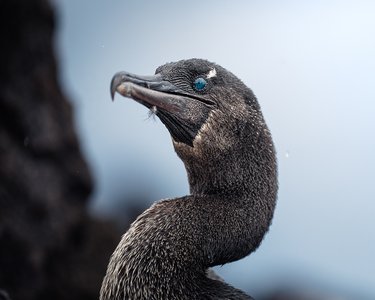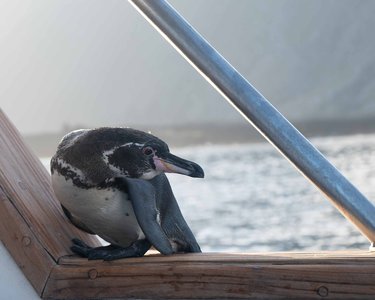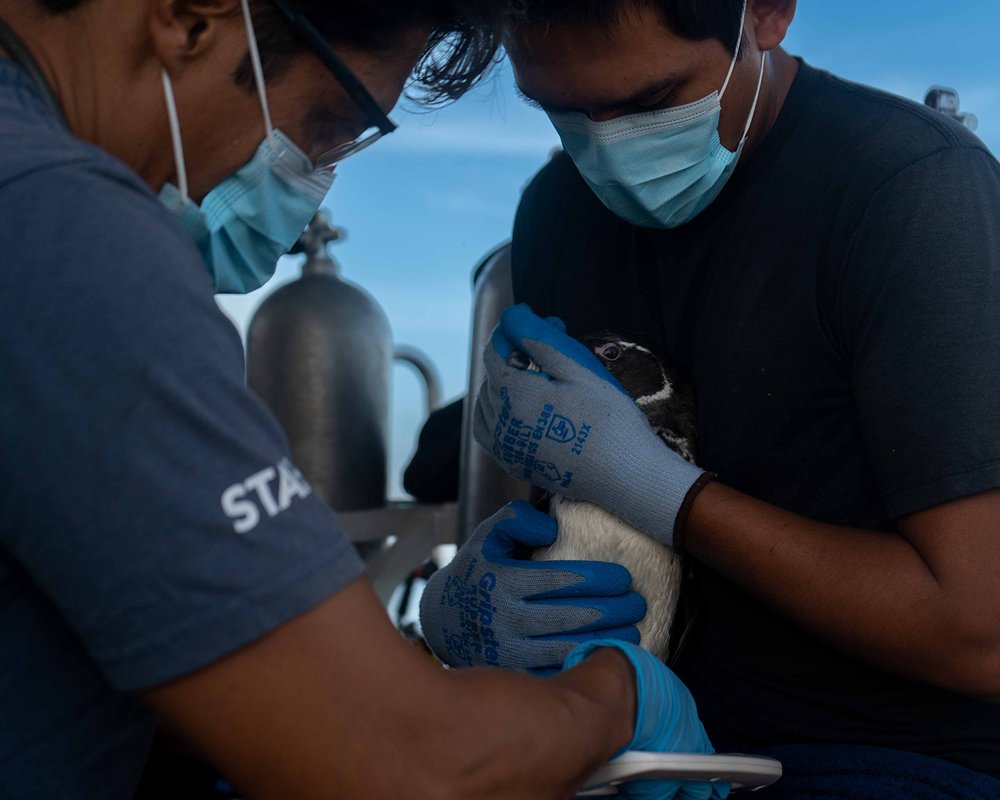The Galapagos Islands are home to species so unique they exist nowhere else on Earth. Among these are the Galapagos penguin and the flightless cormorant, evolutionary wonders that have adapted to thrive in these remote habitats. But these incredible creatures face mounting challenges from climate change, diseases and invasive species. Protecting them is no easy feat—it takes dedication, resources, scientific knowledge, and action.
A yearly pilgrimage at the heart of Galapagos
For over 15 years, the Charles Darwin Foundation’s marine bird conservation team goes together with the Galapagos National Park rangers on a yearly pilgrimage through the wilder, cooler, western region of the archipelago—Isabela, Fernandina, and the Las Marielas islets—to collect critical data on the populations of Galapagos penguin and flightless cormorant.
This is no leisurely cruise. It’s a field expedition filled with challenges, discoveries, and invaluable insights. Over time, the data collected reveals trends and tells a story—one that guides conservation efforts and actions to promote the conservation of these species.
2024 Expedition: what did we find?
In September 2024, the 10 people-team embarked on an eight-day expedition aboard the Guadalupe River boat. Armed with supplies, medical kits, and sea-sickness pills, they set off into the rugged west. Here’s what they recorded:
- Galapagos penguins (Spheniscus mendiculus): 413 individuals, of which 96% were adults and just 1% juveniles. The low juvenile count is concerning, likely linked to the 2023–2024 El Niño event. Warmer waters reduce nutrients and fish availability, the penguins’ main food source, causing them to keep less active, conserve energy and reproduce less.
- Flightless cormorants (Phalacrocorax harrisi): 762 individuals, with 13% juveniles and 86% adults. This ratio has remained stable over the last four years, suggesting cormorants are more resilient to environmental changes compared to penguins.
With populations of only 2,000-3,000 individuals, these species are especially vulnerable to external pressures due to their limited distribution and low reproductive rates. Tracking their health is essential, as even small changes could have significant impacts. This data not only provides a snapshot of their current status but also informs conservation strategies to protect them from threats like climate change, invasive species, and habitat disruption.


A Floating Clinic: Seabird Health Checkups
But the pilgrimage doesn’t stop at counting birds. Our team also ran health checkups on 57 individuals looking for emerging diseases like avian flu, which first appeared in the Galápagos in late 2023. Keeping tabs on seabird health is vital to catching and addressing potential threats to their health, early.
While penguins and cormorants are the stars of the show, the team observed over 20 seabird species with 12,844 individuals been recorded during the trip, from blue-footed boobies to shearwaters. Each sighting underscores the rich diversity of the Galápagos and the importance of protecting it.
Penguins and Cormorants: Why Are They So Special?
The Galápagos penguin is a one-of-a-kind marvel, being the only penguin species living north of the equator. At just 48–53 cm tall, it’s one of the smallest penguins in the world and is listed as Endangered, according to the Red List status of the International Union for Conservation of Nature (IUCN).
The flightless cormorant is no less extraordinary. Instead of flying, it has evolved into an expert diver, perfectly adapted to the nutrient-rich waters of Galapagos. It’s classified as Vulnerable by the same status by the conservation organization.
Both species symbolize resilience and adaptation but also illustrate their high vulnerability to threats like climate change and invasive species.
A Bright Future for Galapagos
Following these these species for decades and by monitoring them is more than science—it’s a commitment to the future of the Galapagos. Each expedition strengthens our understanding about their populations, helping refine strategies to ensure these species can thrive despite growing challenges.
Through research, monitoring, and collaboration, the Charles Darwin Foundation and its partners, including the Galápagos National Park Directorate and FEIG, work tirelessly to protect this extraordinary archipelago.
Want to Help?
Join us in preserving the Galapagos. Learn more about our work and how you can support our conservation efforts and explore the fascinating ecosystems of Galápagos. Together, we can make a difference.





